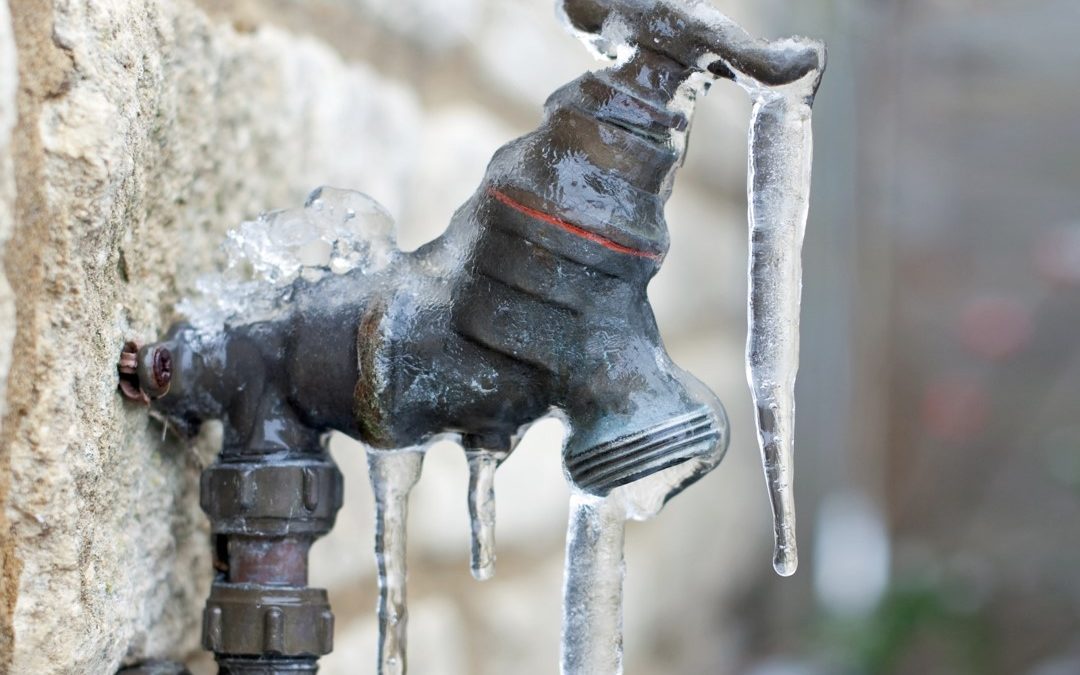During the winter, your water pipes are particularly vulnerable to freezing. But frozen pipes aren’t a commonly accepted part of home ownership – most of us are surprised and dismayed when a frozen pipe renders our plumbing system unusable or worse, bursts and causes flooding. Below are some factors that can make your pipes more susceptible to freezing. These factors often combine to create a recipe for disaster:
- Temperatures of 20 degrees or lower – Although water freezes at 32 degrees, the water inside your pipes is more protected than the water sitting directly outside. Temperatures must dip far below freezing. Most cases of frozen pipes happen when the outside temperature reaches 20 degrees or lower.
- Being in unheated interior spaces – Your attic, crawl space, and basement often have pipes in them, but they don’t have the benefit of your home’s heating to keep them warm. Pipes most often burst in these unheated areas of your home.
- Being located in exterior walls – Pipes located in the outer walls of your home are right up against the cold. This position can be made worse by insufficient insulation or cracks in your walls that let cold air in.
- Insufficient insulation – Insulation protects against the cold, so if you don’t have enough in your walls, attic, or crawl space, your pipes are at a greater risk for freezing.
- Drafty areas – Wind chill can play a large role in your pipes freezing. If your attic or crawl space is drafty, the pipes there are much more likely to freeze.
One telltale sign that a pipe has frozen is if the pipe bulges out from its natural shape.
If the pipe has already burst, you’ll see an incision in the pipe about three quarters to an inch long. Sometimes, you’ll find a leak and water damage, but it depends on the circumstances. If, for example, the water pressure is low in a forced hot water heating system and the temperature in the space drops rapidly, the water in the pipe can freeze quickly and split the pipe without any water seeping out.
If you’re around when the freezing happens, you might hear a few small noises, but nothing “catastrophic” that draws your attention to the frozen pipe. This process happens very slowly as it freezes hydraulically, and then it just fractures the pipe.
If a pipe has frozen but hasn’t burst, you can try to take the following steps to protect your plumbing and your home:
- Shut off your water – You need to find your main water supply valve. If you don’t know where it is, call your utility company’s emergency line for assistance locating it.
- Try to find the frozen pipe – Remember that it’s most likely in a basement, crawl space, attic, exterior wall, or under a sink. You will most likely see frost on the outside of the pipe.
- Open the faucets connected to that pipe – This will relieve pressure on the non-frozen portions of the pipe.
- Check for leaks – If you can see that the pipe is cracked or has burst, call a professional plumber immediately.
- Attempt to thaw – If you find the pipe and it is easily accessible, you can try to use a hair dryer or space heater to thaw it. Do not use an open flame.
Although you can sometimes successfully thaw a pipe by yourself, it’s best to call a professional plumber. They will arrive with specialized equipment designed to thaw pipes safely and effectively. They’ll also be able to identify any damage that isn’t immediately apparent.
Even if a frozen pipe seems fine, it might have cracked or burst somewhere you can’t see, meaning it will leak once thawed. If the pipe did not burst or leak, it may have been weakened by the pressure of the ice. You should have a plumber examine any pipes that experienced a freeze, to check that they are still sound and not at risk of failure.
When your pipes freeze, count on the emergency plumbing crew at Rooter Man. Contact us for burst & frozen pipe repair throughout the Greater New Orleans area.



